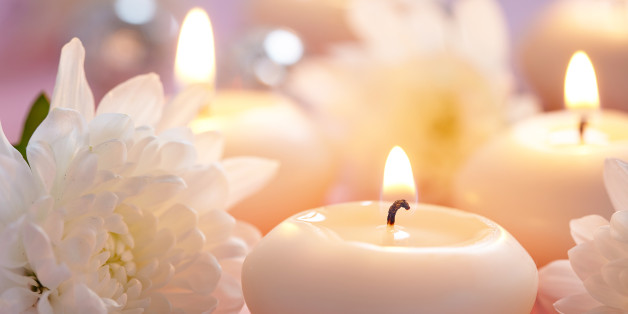
There is something just so eternally soothing about the flicker of candlelight. For centuries, we’ve lingered in its glow. And more recently, scents have been added to create an even more sensual experience. Ahhh… there’s not much better than basking indoors amidst a wistful whirl of crisp evergreen or the nostalgic autumn aura of pumpkin spice.
Since the early 2000’s though, there’s been substantial evidence surrounding the dangers of burning paraffin wax and lead cored wicks. While candle wicks manufactured and sold in the U.S. today are required to be lead free, options from other countries may still contain lead. A quick way to check is to peel back the wick and look for any metal or wire before burning it. Paraffin wax, a product actually distilled from petroleum products, is still however used in many cheaper candles. Natural vegetable wax options, including soy bean, hemp and beeswax alternatives, are safer but you’ll want to do your due diligence to check ingredient labels for suspicious “blends” that may still include paraffin.
Now we’re not saying you have to give up your candlelight bliss just yet! Instead, why not consider whipping up a batch of your own brew this year before you stock up on store bought mystery concoctions? You get to be in charge of the ingredients, save a little money in the process and it’s surprisingly easier than you might think! Perfect for the upcoming gift giving season and a quick craft to sweeten your home, we’re all about DIY essential oil candles right now… See what we mean with the simple steps below!
Wax
All natural soy wax or beeswax specifically for candle making can be purchased at your local craft store or even ordered from Amazon. Easy enough, right? Just be sure to check your ingredients list and avoid suspicious blends.
Heat
You can purchase a pouring pot or heat the wax in your microwave. If you’re using a pouring pot, only fill it halfway to avoid any messes and pour the hot liquid into your candle’s jar or tin to the desired fill line. Should you decide to heat the wax in the microwave, be very careful to heat it in no more than 30 seconds increments and obviously use glass for the candle container instead of tin. If you’re heating in the microwave, you can use the same container to heat as you will your candle. Always utilize great care as the glass will be very hot. Continue filling with flakes of wax until the melted wax reaches the top of the container.
Scent
Insert your desired essential oil drops in the wax while it is still hot if you are making a scented candle. Pinterest is full of essential oil recipes to recreate your favorite scents. We love this list of fall favorites from The Prairie Homestead. As far as the oils are concerned, you can purchase them anywhere from Whole Foods to Walmart. But do be conscious of ingredients and if more expensive oils (such as Jasmine) have been diluted with a chemical fragrance to cut costs. There are many great brands out there, but Mountain Rose Herbs offers a huge selection of certified organic oils that are available online without the sales pitch to become a distributor.
Wick
While the candle is still hot, insert a natural wick (such as cotton coated in soy wax) into the center. As with the wax, this can be purchased at a local craft store or Amazon. Let your candle dry until it is solid. This will happen a lot quicker than you might imagine!
Now while you’re luxuriously lounging amidst the candlelight, indulge your other senses too with one of our sumptuously soft spa-like shag area rugs, like the Mohawk Home Juliet Metallic Shag Accent Rug, exclusively at Bed Bath & Beyond. Available in four tranquil colors, including aqua, taupe, cream and grey, the Juliet also features flecks of metallic yarn, perfect to pick up that glistening candlelit glow! Aptly named the Juliet, this romantic rug is ideal for any bedroom or cozy corner.
Do you use essential oils in your home? What are some of your favorite uses?







